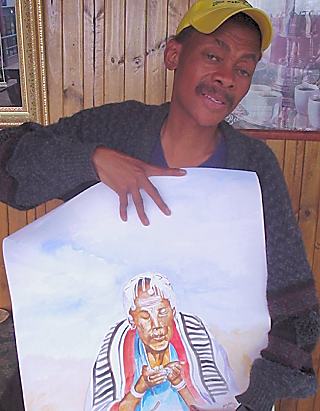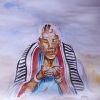painter, Lesotho
His formal education did not progress well because he had a car accident in 1987, in which he had a brain fracture and broke his leg. But he still continued with his artwork even though there were rarely art exhibitions in Lesotho. He lost his wife in 2001 and he is now supporting his 13-year-old daughter alone.
Tsepiso began his artistic career with clay modelling as a child. In primary school, he began to draw, but with little instruction. There is little formal art education in Lesotho schools.
Due to this fact, and the fact that there are many young Basotho students with an interest in art, Tsepiso would like to open an art school to support artistic creativity and to share his skills.
In Lesotho, it is primarily foreigners who buy his work, as most Basotho do not have an interest in purchasing artwork. There is little awareness about the value of art. Tsepiso is interested in exhibiting outside of Lesotho to teach others about rural Basotho life.
He uses a variety of mediums to portray the life of Basotho in this small mountainous kingdom, including: watercolours, plaka, acrylic, charcoal, oil paints, and pencil and ink. He learned how to use watercolours by looking at other artists' work. Although his paintings are incredibly life-like, he does not use photographs, but draws and paints from memory.





